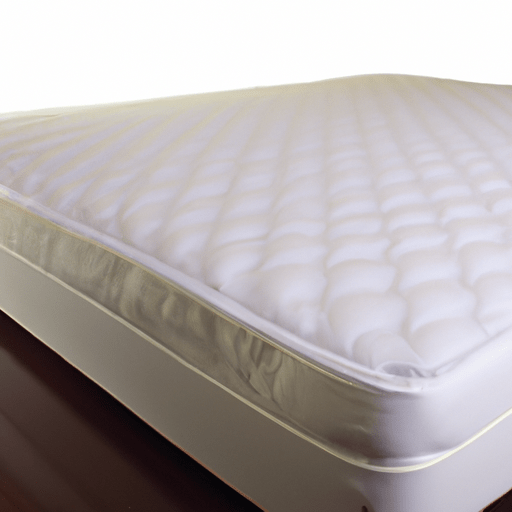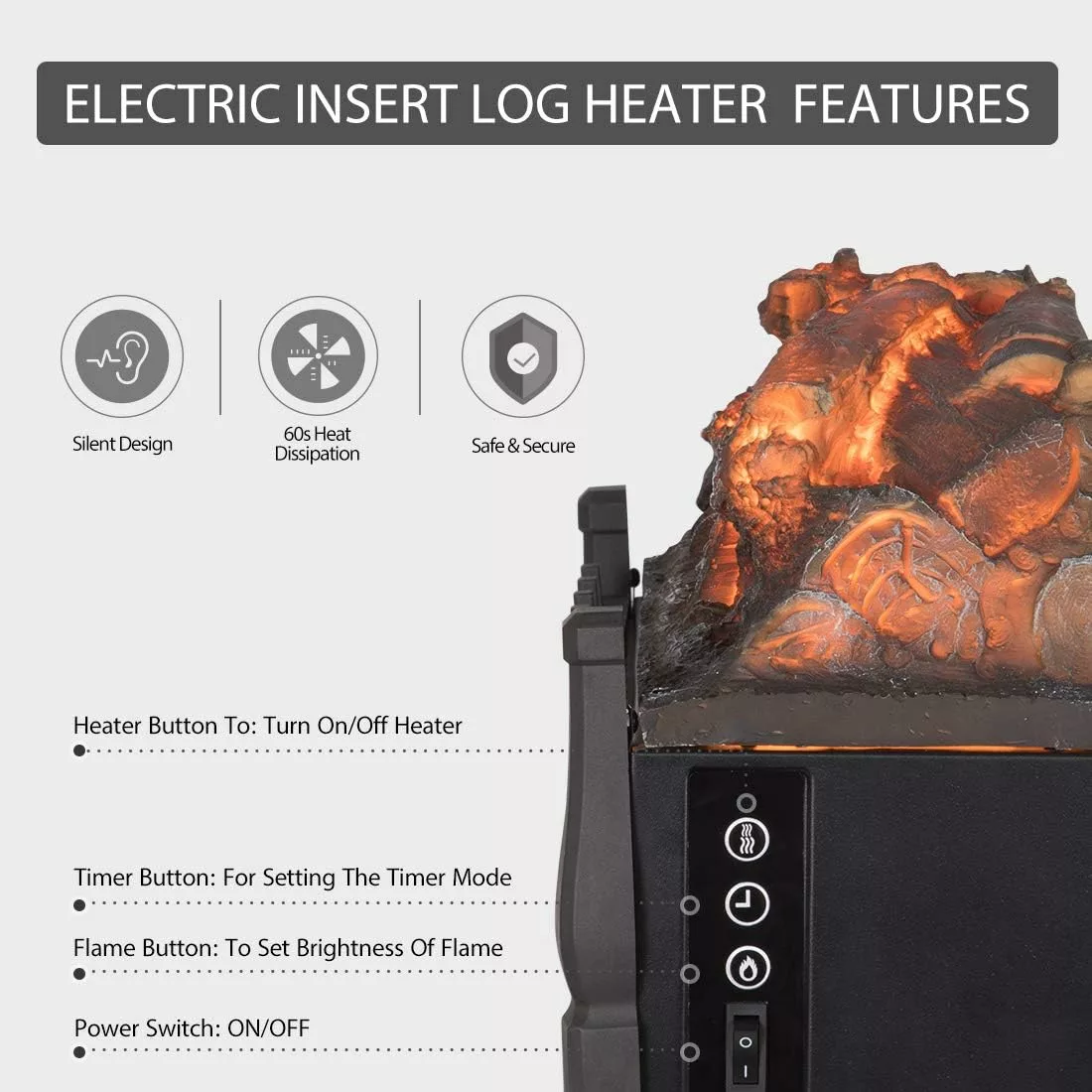Are you tired of restless nights and waking up feeling sore? Look no further than the rebonded foam mattress, a simple solution to all your sleep problems. This innovative mattress combines comfort, support, and durability to give you the best possible sleep experience. Made from high-density foam scraps that are bonded together, the rebonded foam mattress offers outstanding body contouring and pressure relief. Say goodbye to tossing and turning, and say hello to a restful night’s sleep with a rebonded foam mattress.
Definition of Rebonded Foam Mattress
What is a rebonded foam mattress?
A rebonded foam mattress is a type of mattress that is made from small pieces of shredded foam, which are then bonded together using a strong adhesive. This process creates a solid and durable foam layer that provides support and comfort for the sleeper. Rebonded foam mattresses are known for their firmness and are often used in orthopedic mattresses, as they offer excellent support for the back and spine.
Process of making rebonded foam
The process of making a rebonded foam mattress starts with collecting small pieces of shredded foam, which can be sourced from various materials such as furniture foam, foam scraps, or foam from old mattresses. These foam pieces are then cleaned and treated to remove any impurities or contaminants.
Once the foam is cleaned, it is mixed with a binding agent, usually polyurethane, which acts as an adhesive to bond the foam pieces together. The mixture is then poured into a mold and compressed under high pressure to create a solid foam block. After the foam block is formed, it is cut into the desired mattress size and shape.
Different types of rebonded foam mattresses
There are several different types of rebonded foam mattresses available in the market, each offering unique features and benefits. Some common types include:
-
High-Density Rebonded Foam Mattress: These mattresses are made from a higher density foam, which provides firmer support and is ideal for individuals with back or joint pain.
-
Medium-Density Rebonded Foam Mattress: These mattresses offer a balance between support and comfort. They are suitable for individuals who prefer a medium-firm mattress.
-
Plush Rebonded Foam Mattress: Plush rebonded foam mattresses have an added layer of soft foam on top, providing a luxurious and cushioned feel. They are perfect for those who prefer a softer sleeping surface.
Comparing Rebonded Foam Mattress to Other Types
Difference between rebonded foam and memory foam mattresses
One major difference between rebonded foam and memory foam mattresses lies in their composition. While rebonded foam is made from shredded foam pieces bonded together, memory foam is made from viscoelastic polyurethane foam. Memory foam mattresses offer a contouring effect and have a slower response time, conforming to the shape of the body.
Rebonded foam mattresses, on the other hand, provide a firmer support and have a quicker response time. They are known for their durability and stability. Both types of mattresses have their own benefits, and the choice depends on individual preferences and sleeping needs.
Rebonded foam versus latex mattresses
Another comparison can be drawn between rebonded foam and latex mattresses. Latex mattresses are made from natural or synthetic latex, which offers a more bouncy and responsive feel compared to rebonded foam. Latex mattresses provide excellent support and pressure relief and are known for their breathability.
Rebonded foam mattresses, however, offer a firmer support and are often recommended for individuals suffering from back or joint issues. They also offer good motion isolation and are more affordable compared to latex mattresses. Again, the choice between the two depends on personal preferences and sleep requirements.
Comparison of rebonded foam and spring mattresses
When comparing rebonded foam and spring mattresses, the main difference lies in their support system. Spring mattresses use metal coils to provide support, while rebonded foam mattresses rely on the bonded foam layers.
Spring mattresses offer a buoyant and responsive feel, with good airflow and temperature regulation. However, they may often transfer motion and can be less suitable for individuals with specific orthopedic needs. Rebonded foam mattresses, on the other hand, provide a firmer support and minimize motion transfer. They can be a better choice for individuals who prefer a more stable sleeping surface.
Distinguishing features of Rebonded Foam Mattresses
Material and composition
Rebonded foam mattresses are composed of shredded foam pieces that are bonded together using a binding agent. The foam pieces used in the mattress can vary in density, depending on the desired firmness and support level. The binding agent, usually polyurethane, helps in creating a strong and durable foam layer. The composition of rebonded foam mattresses ensures longevity and stability.
Firmness and support
One of the key distinguishing features of rebonded foam mattresses is their firmness and support. As the foam pieces are bonded together, the mattress provides a solid and stable surface, offering excellent support for the back and spine. The level of firmness of a rebonded foam mattress can vary depending on the density of the foam used. Some individuals may find rebonded foam mattresses too firm for their preference, while others may benefit from the added support.
Layering and blending of rebonded foam mattresses
Rebonded foam mattresses can also be layered or blended with other materials for added comfort and support. Some mattresses may have a layer of memory foam or latex on top of the rebonded foam for enhanced cushioning and pressure relief. This layering or blending of different types of foam allows for a customized sleeping experience based on individual preferences.
Quality and Durability of Rebonded Foam Mattresses
Life expectancy of a rebonded foam mattress
The life expectancy of a rebonded foam mattress can vary depending on various factors such as the quality of materials used, manufacturing process, and regular maintenance. On average, a rebonded foam mattress can last between 8 to 10 years with proper care.
To prolong the lifespan of a rebonded foam mattress, it is important to rotate the mattress regularly, use a mattress protector to prevent stains and spills, and maintain a clean sleeping environment. These practices can help ensure the longevity of the mattress and provide a comfortable sleeping surface for years to come.
Maintaining the quality of rebonded foam mattress
To maintain the quality of a rebonded foam mattress, regular maintenance and care are essential. Here are some tips to keep your rebonded foam mattress in top condition:
-
Rotate the mattress: To avoid uneven wear and sagging, rotate the mattress every 3 to 6 months. This allows for even distribution of weight and extends the lifespan of the mattress.
-
Use a mattress protector: A mattress protector acts as a barrier against spills, stains, and dirt, keeping your mattress clean and hygienic. It also helps in reducing the wear and tear of the mattress.
-
Clean spills promptly: If a spill occurs, clean it immediately to prevent staining or damage to the mattress. Use a mild detergent and warm water to remove the stain, and make sure to dry the mattress thoroughly before use.
-
Avoid jumping or standing on the mattress: Excessive pressure or jumping on the mattress can cause damage to the foam layers. It is best to use the mattress solely for sleeping or resting purposes.
Factors affecting the durability of rebonded foam mattresses
Several factors can affect the durability of a rebonded foam mattress. These include:
-
Quality of materials: The quality of the foam used in the mattress, as well as the binding agent, can significantly impact the durability. Higher quality materials are more likely to withstand regular use and maintain their shape and support over time.
-
Manufacturing process: The way the rebonded foam mattress is manufactured can also influence its durability. Proper compression and bonding techniques ensure that the foam layers stay intact and do not break down or sag easily.
-
Usage and care: How the mattress is used and cared for can greatly affect its lifespan. Overloading the mattress with excessive weight, not using a mattress protector, or failing to rotate the mattress regularly can all contribute to premature wear and tear.
By considering these factors and implementing proper maintenance practices, you can ensure that your rebonded foam mattress remains durable and provides long-lasting comfort.

Comfort Level of Rebonded Foam Mattresses
Sleep quality on a rebonded foam mattress
The comfort level of a rebonded foam mattress plays a significant role in ensuring a good night’s sleep. Rebonded foam mattresses are known for their firm support, which can be beneficial for individuals with back or joint pain. The solid and stable surface of a rebonded foam mattress helps distribute body weight evenly, promoting proper spinal alignment.
However, comfort can vary depending on personal preferences. Some individuals may find the firmness of a rebonded foam mattress too uncomfortable, especially if they prefer a softer sleeping surface. In such cases, adding a mattress topper or opting for a plush rebonded foam mattress with an additional layer of soft foam can enhance comfort and provide a more cushioned feel.
Body heat absorption and dispersion
One of the concerns often associated with foam mattresses is heat retention. However, rebonded foam mattresses are designed to be breathable and have good heat absorption and dispersion properties. The shredded foam pieces and the open-cell structure of the rebonded foam allow for better airflow and heat dissipation, preventing excessive heat buildup during sleep.
Additionally, some rebonded foam mattresses may be infused with cooling gel or have a breathable cover to further enhance heat regulation and keep the sleeper cool and comfortable throughout the night.
Motion transfer minimization in rebonded foam mattresses
Another comfort feature of rebonded foam mattresses is their ability to minimize motion transfer. This means that movement on one side of the mattress is less likely to disturb the other person sleeping on the mattress. The bonded foam layers absorb and isolate motion, allowing for a more undisturbed sleep experience.
This feature is particularly beneficial for couples or individuals sharing a bed, as it helps ensure a peaceful night’s sleep, even if one person tends to toss and turn or get in and out of bed during the night.
Health benefits of using Rebonded Foam mattresses
How rebonded foam mattresses offer back and spine support
One of the key health benefits of using a rebonded foam mattress is the support it provides for the back and spine. The firmness of the mattress helps maintain proper spinal alignment, relieving pressure on the joints and reducing the risk of developing back pain.
By supporting the natural curvature of the spine, rebonded foam mattresses promote healthy posture, which is essential for overall spinal health. They also help in distributing body weight evenly, reducing the strain on pressure points and minimizing discomfort during sleep.
Impact on skin health and allergies
Rebonded foam mattresses can also have positive effects on skin health and allergies. The open-cell structure of the foam allows for better airflow, which helps in reducing moisture buildup and preventing the growth of allergens such as mold and dust mites.
Furthermore, rebonded foam mattresses are often hypoallergenic, meaning they are less likely to trigger allergic reactions in individuals prone to allergies or sensitivities. The lack of crevices and seams in the solid foam layer makes it difficult for allergens to accumulate, promoting a cleaner and healthier sleeping environment.
Potential reduction in sleep disorders and insomnia
The comfort and support offered by rebonded foam mattresses can potentially help reduce sleep disorders and insomnia. The firmness of the mattress aids in promoting better sleep posture, which can alleviate symptoms associated with sleep apnea, snoring, and other breathing-related sleep disorders.
Additionally, the firm support of rebonded foam mattresses can help reduce pressure points, allowing for deeper and more restful sleep. The combination of proper spinal alignment and reduced discomfort can contribute to improved sleep quality and a healthier sleep pattern.

Potential Drawbacks and Solutions with Rebonded Foam Mattresses
Common complaints about rebonded foam mattresses
While rebonded foam mattresses have numerous benefits, there can be some common complaints associated with them. Some individuals may find the firmness of the mattress uncomfortable, especially if they prefer a softer sleeping surface. Others may experience a slight odor when the mattress is new, which is a result of the manufacturing process but dissipates over time.
Additionally, rebonded foam mattresses may be less responsive compared to other types of mattresses, such as latex or memory foam. The lack of contouring and responsiveness can be a drawback for individuals who prefer a mattress that molds to their body shape.
Strategies to adjust to a rebonded foam mattress
To adjust to a rebonded foam mattress, it is important to give your body time to adapt to the firmer support. It may take a few weeks for your body to adjust to the new mattress, especially if you are transitioning from a softer mattress. Gradually increasing the amount of time spent on the rebonded foam mattress can help with the adjustment process.
Using a mattress topper or choosing a rebonded foam mattress with a plush comfort layer can also provide a more comfortable sleeping surface for those who find the firmness of the mattress too intense. The additional cushioning can help alleviate any discomfort and provide a more balanced feel.
Solutions for possible issues
To address the issue of firmness, it is essential to select a rebonded foam mattress that suits your comfort preferences. Some manufacturers offer different firmness options, allowing you to choose a mattress that aligns with your specific needs.
If there is an initial odor when the mattress is new, it is recommended to allow the mattress to air out in a well-ventilated room for a few days. This will help dissipate any odor and ensure a fresher sleeping environment.
If the lack of contouring or responsiveness is a concern, you may consider adding a mattress topper made of memory foam or latex to enhance the comfort and contouring properties of the mattress.
Environmental Impact of Rebonded Foam Mattresses
Manufacturing process and sustainability
The manufacturing process of rebonded foam mattresses involves recycling and repurposing foam scraps and offcuts, making them more environmentally friendly compared to mattresses made solely from new foam materials. By reusing existing foam, rebonded foam mattresses help reduce waste and minimize the burden on landfills.
Additionally, rebonded foam mattresses require less energy and resources to produce compared to other types of mattresses, such as spring mattresses. The production process of rebonded foam mattresses is highly efficient and has a lower carbon footprint, making them a more sustainable choice.
Disposal and recycling of rebonded foam mattresses
At the end of its life cycle, a rebonded foam mattress can be recycled or repurposed. The foam can be shredded and used as stuffing for pillows or cushions, or it can be recycled into new foam products through specialized recycling facilities.
It is important to dispose of the mattress responsibly and check with local recycling centers or waste management facilities for proper disposal options. By recycling or repurposing the mattress, you can contribute to reducing waste and promoting a more sustainable approach to mattress disposal.
Environmental pros and cons of rebonded foam
The environmental pros of rebonded foam mattresses include their use of recycled materials, minimal energy consumption during production, and the potential for recycling at the end of their lifespan.
However, it is important to note that rebonded foam mattresses may still contain binding agents or chemicals used during the manufacturing process, which may have environmental implications. It is crucial to choose rebonded foam mattresses from reputable manufacturers who prioritize eco-friendly practices and use low-toxicity materials.
Selection Guide for Rebonded Foam Mattresses
Key factors to consider when selecting rebonded foam mattresses
When choosing a rebonded foam mattress, there are several key factors to consider:
-
Firmness level: Determine your preferred firmness level and select a rebonded foam mattress that aligns with your comfort preferences.
-
Mattress size: Choose the appropriate mattress size based on your personal needs and the size of your bed frame.
-
Support and pressure relief: Consider your specific support and pressure relief needs, especially if you have back or joint issues. Look for rebonded foam mattresses that offer targeted support and alleviate pressure points.
-
Quality and durability: Research the reputation of the brand and the quality of materials used in the mattress. Look for warranties or guarantees that can provide reassurance of the mattress’s durability.
Best practices in testing for personal preference
To ensure that a rebonded foam mattress is suitable for your personal preference, it is recommended to test the mattress before making a purchase. Visiting a physical store and lying down on the mattress for at least 10-15 minutes can give you a better idea of its firmness, support, and overall comfort.
Ask questions, seek guidance from sales representatives, and take note of any specific features or benefits that stand out to you. Testing the mattress in person allows you to make a more informed decision and ensures that you select a mattress that meets your specific needs.
Comparing brands and models of rebonded foam mattresses
When comparing different brands and models of rebonded foam mattresses, consider factors such as reputation, customer reviews, and available features. Look for brands that have established credibility and positive customer feedback. Reading reviews and testimonials can provide insights into the performance, comfort, and durability of the mattress.
Compare the specific features and benefits offered by different brands, such as additional comfort layers, cooling properties, or motion isolation capabilities. Consider your personal preferences and prioritize the features that are most important to you. By comparing different brands and models, you can make an informed decision and select a rebonded foam mattress that suits your needs and preferences.
Cost Analysis of Rebonded Foam Mattresses
Price range of rebonded foam mattresses
The cost of rebonded foam mattresses can vary depending on factors such as the brand, size, and additional features. Generally, rebonded foam mattresses are more affordable compared to other types of mattresses such as memory foam or latex.
Entry-level rebonded foam mattresses can range from $200 to $500, while higher-end options with additional features or luxury materials can cost upwards of $1000. It is crucial to consider the quality, durability, and warranty offered by the mattress, in addition to the price point, to ensure that you are getting the best value for your money.
Value for money comparison with other types of mattresses
When comparing the value for money of rebonded foam mattresses with other types of mattresses, it is important to consider the specific features and benefits offered by each type.
Rebonded foam mattresses provide good support and durability at a more affordable price point compared to mattresses made from memory foam or latex. While memory foam and latex mattresses may offer additional benefits such as contouring or natural materials, their higher price tags can make rebonded foam mattresses a more cost-effective choice for individuals seeking a firm and supportive sleeping surface.
Long-term financial considerations and savings
Investing in a high-quality rebonded foam mattress can offer long-term financial savings. By selecting a durable and well-constructed mattress, you can avoid the need for frequent replacements and reduce the overall cost of mattress ownership.
Additionally, a comfortable and supportive mattress can contribute to improved sleep quality and overall well-being, which can have long-term health benefits. Better sleep quality can lead to increased productivity, reduced healthcare costs, and a better quality of life.
Considering the long-term financial impact and the potential health benefits, investing in a rebonded foam mattress can be a wise decision that offers both comfort and value.







